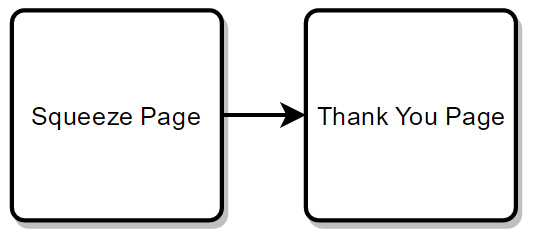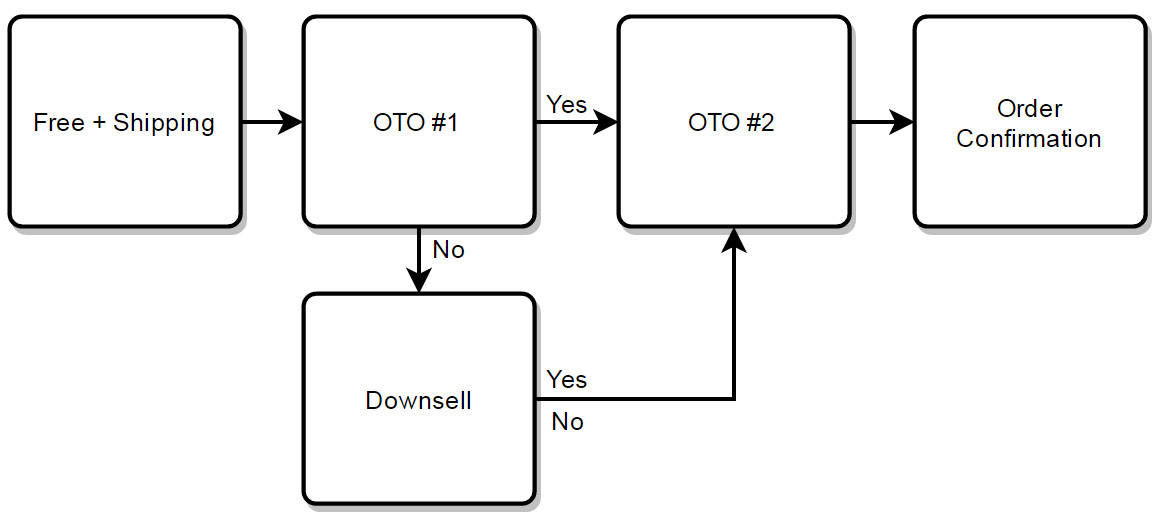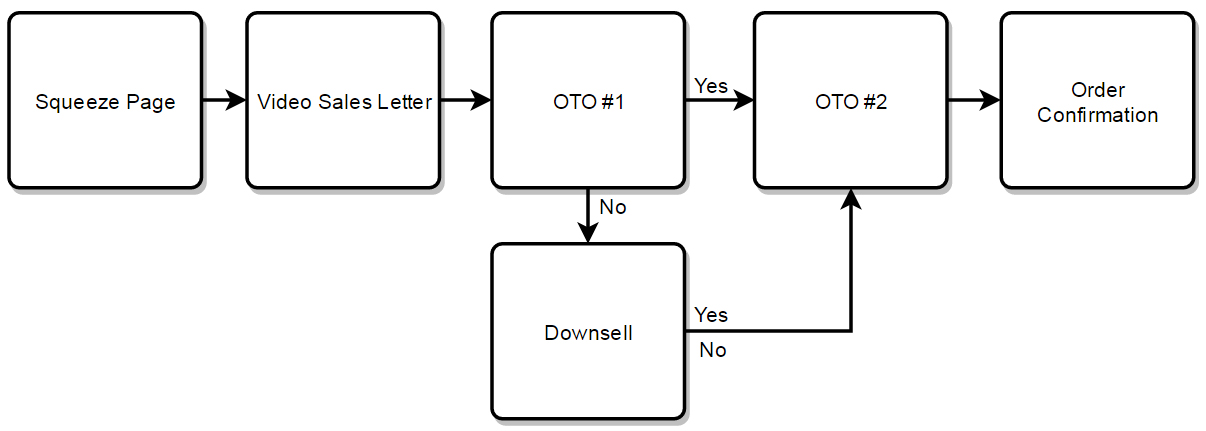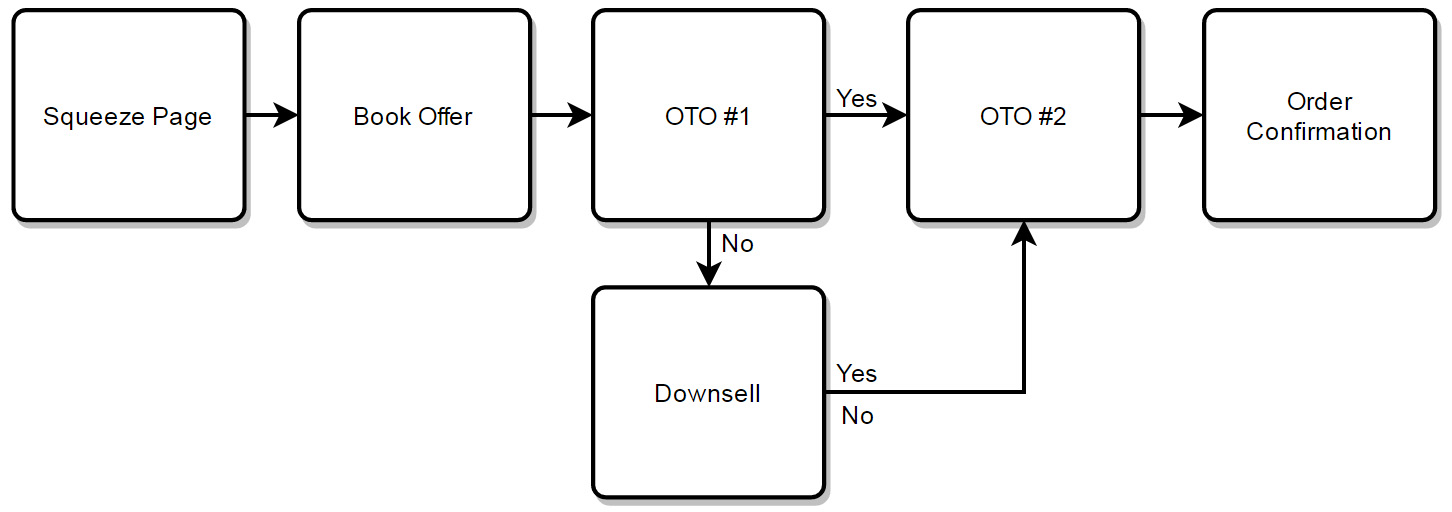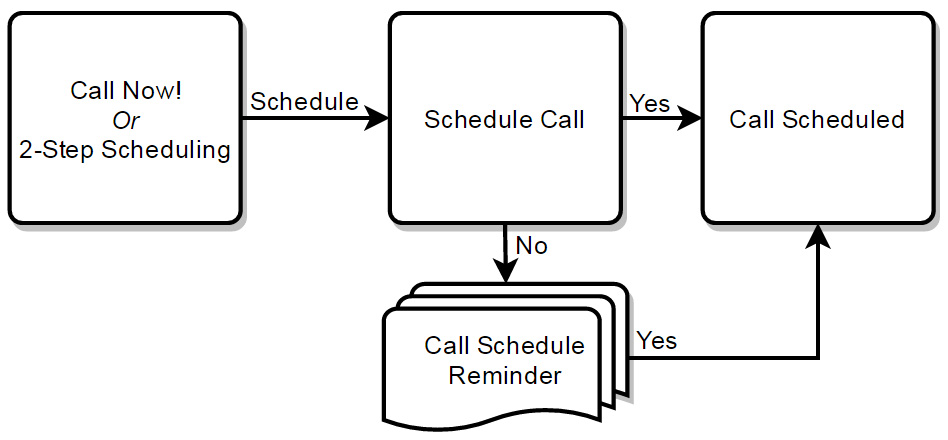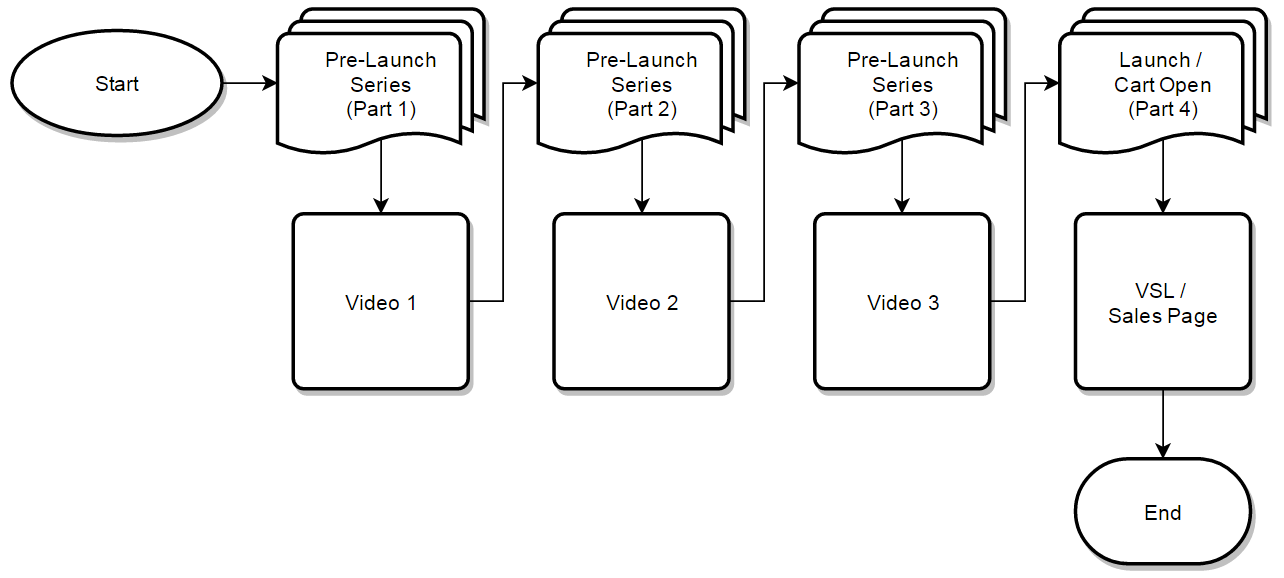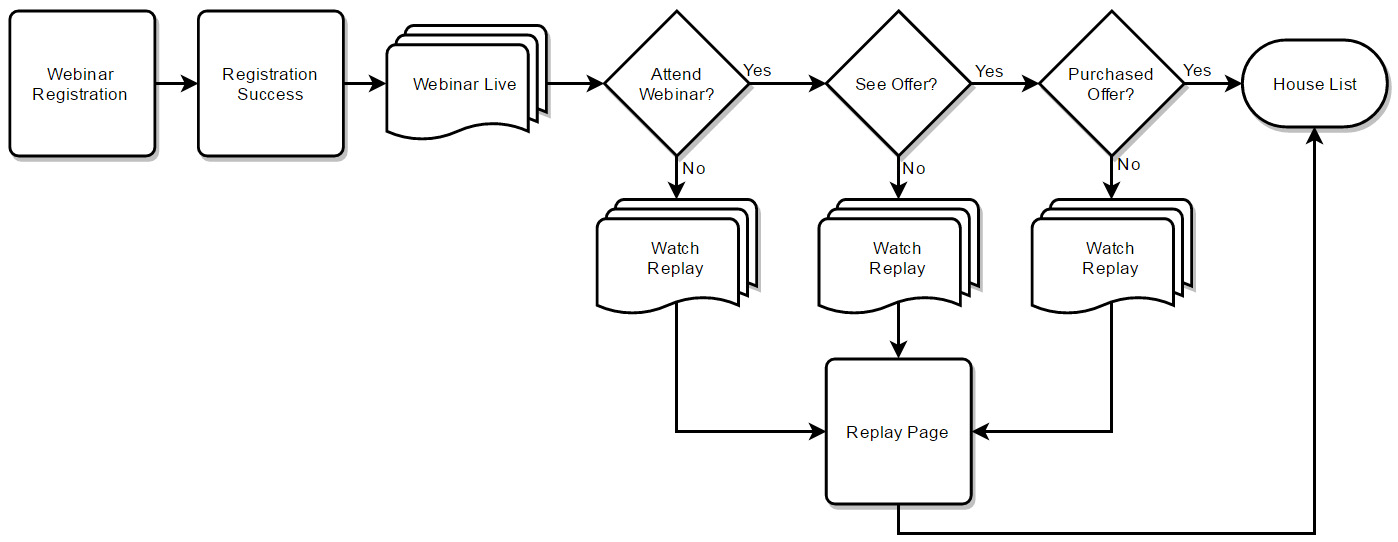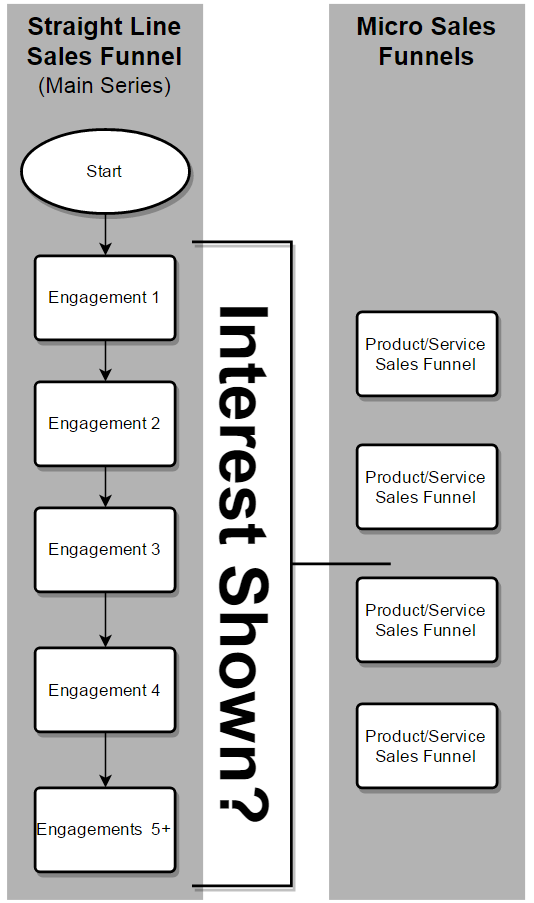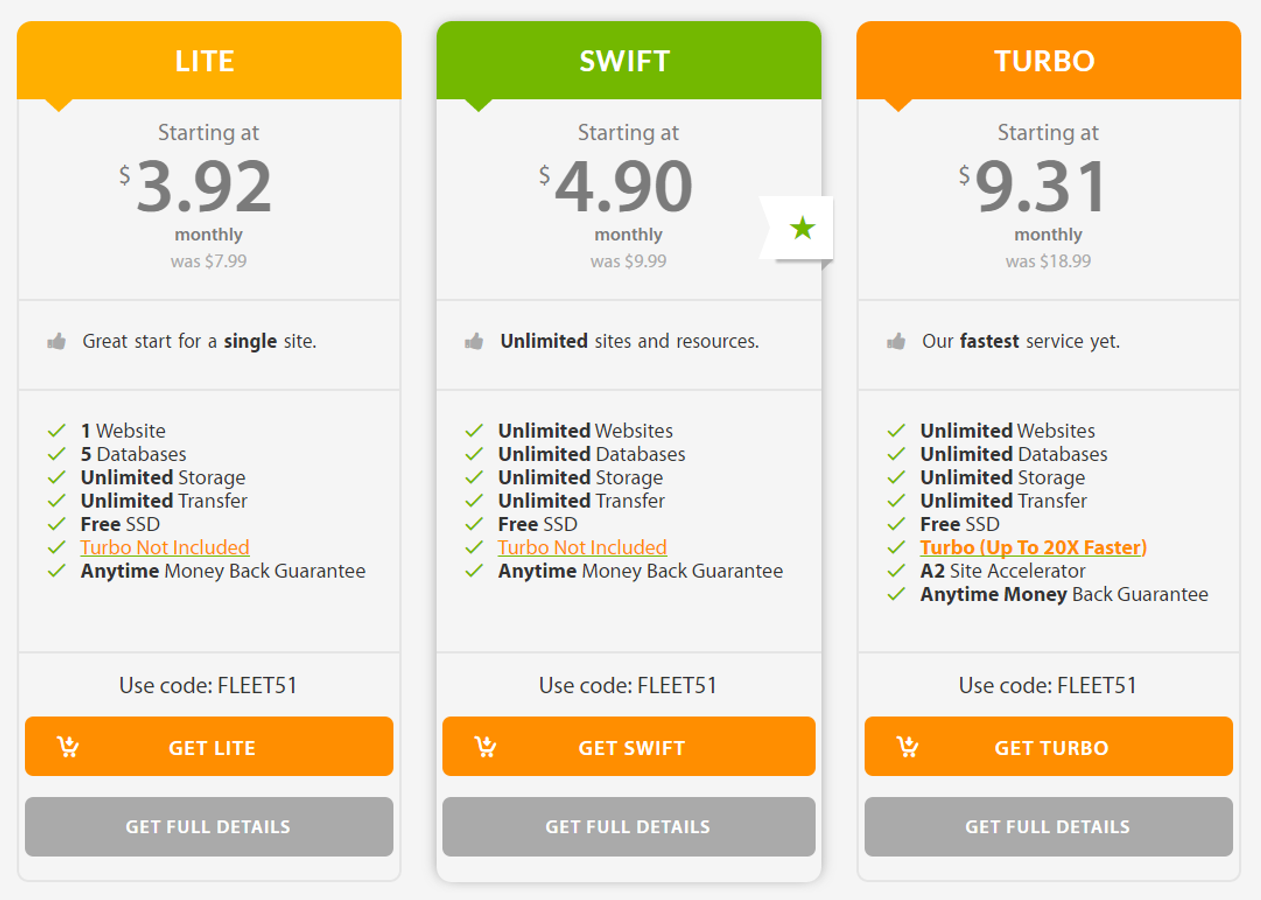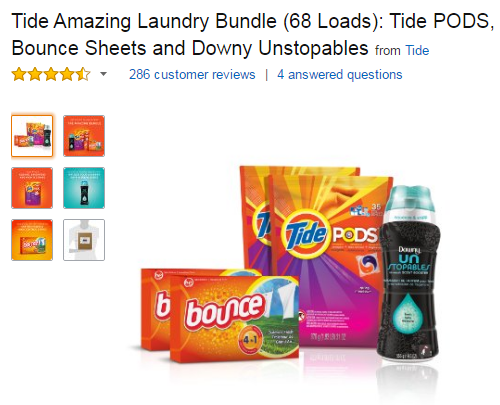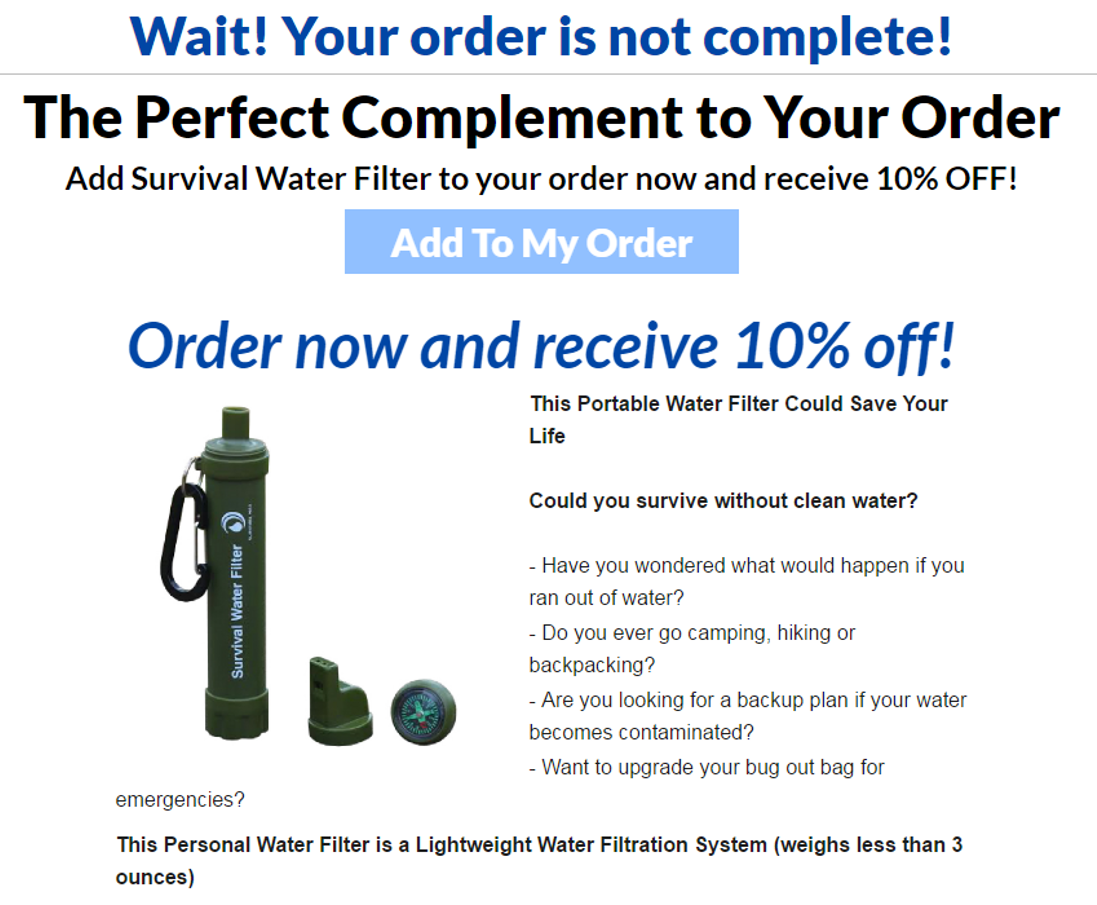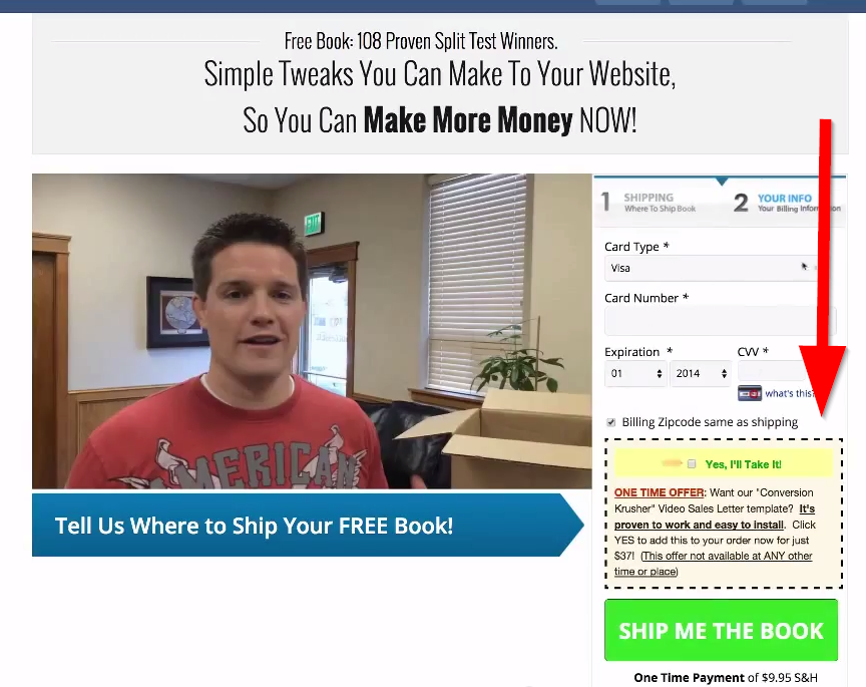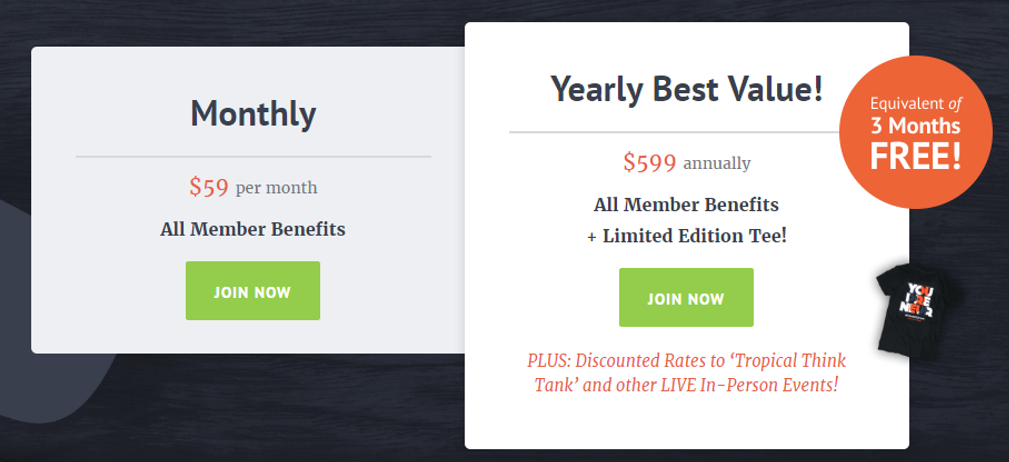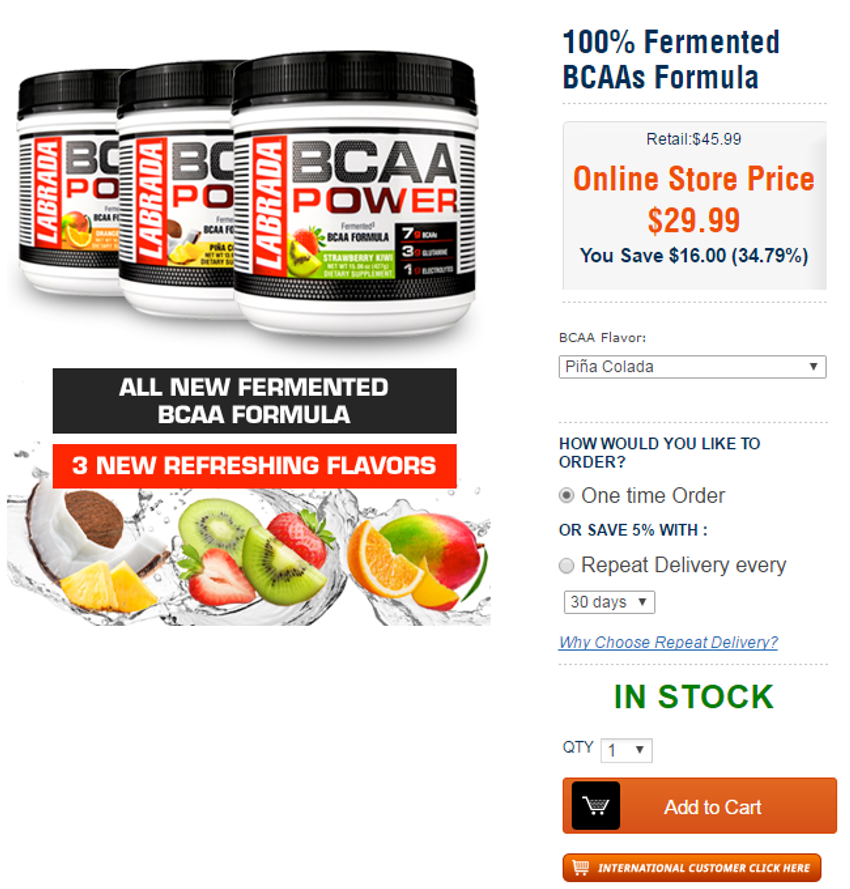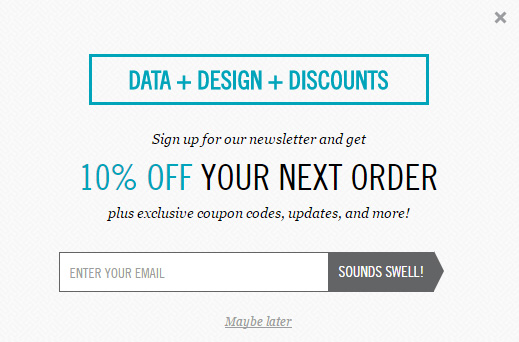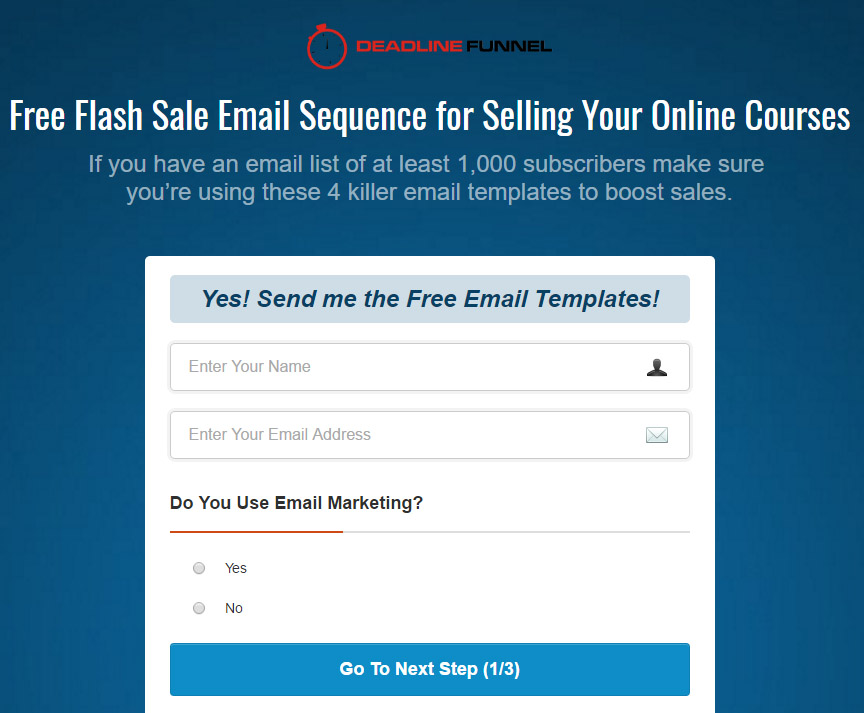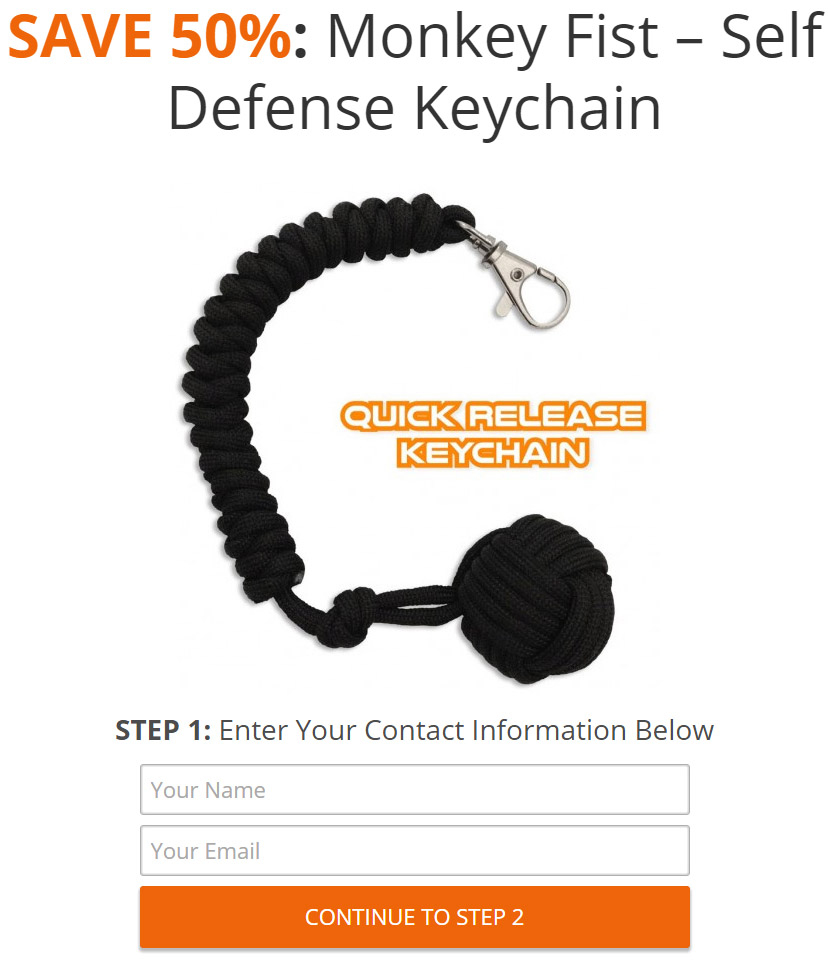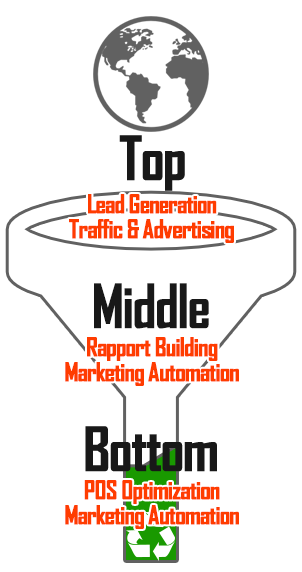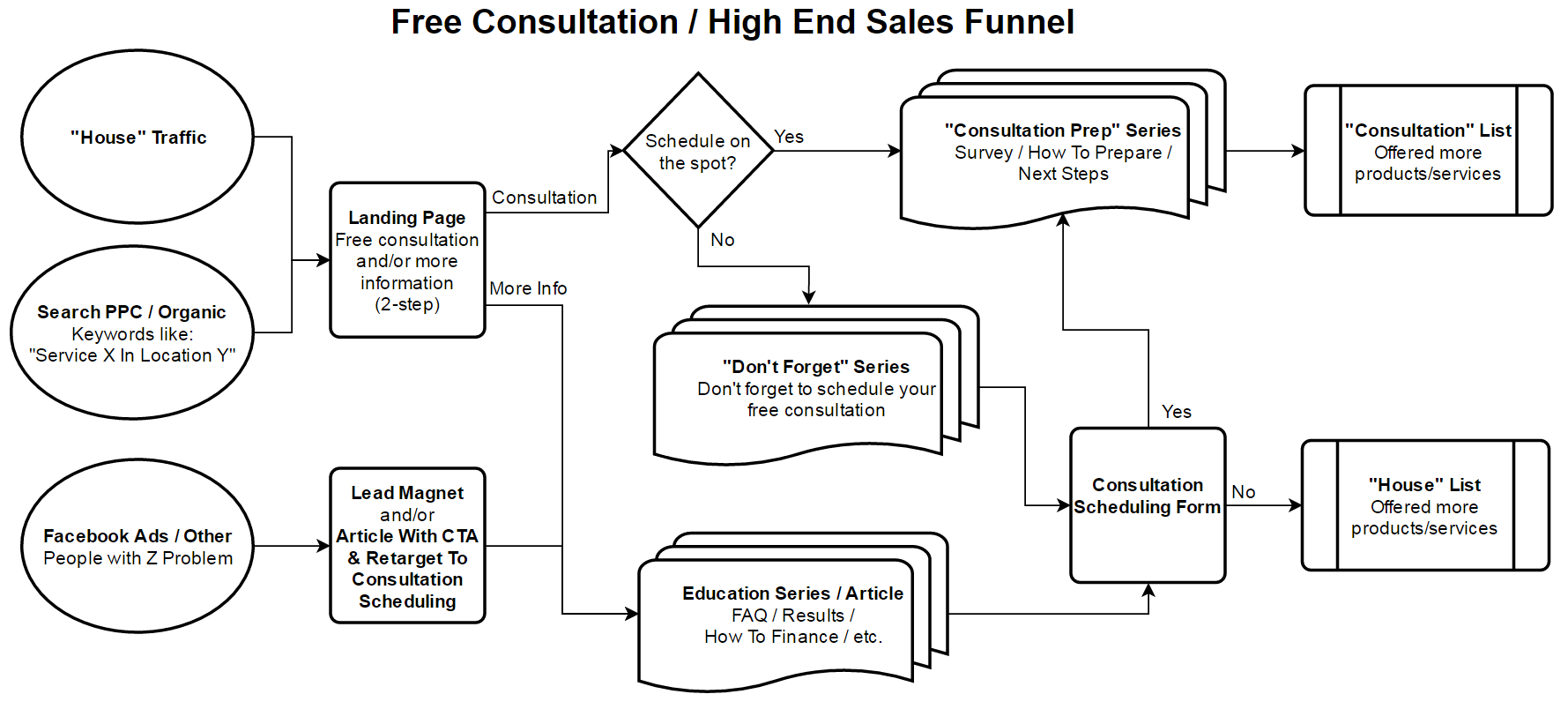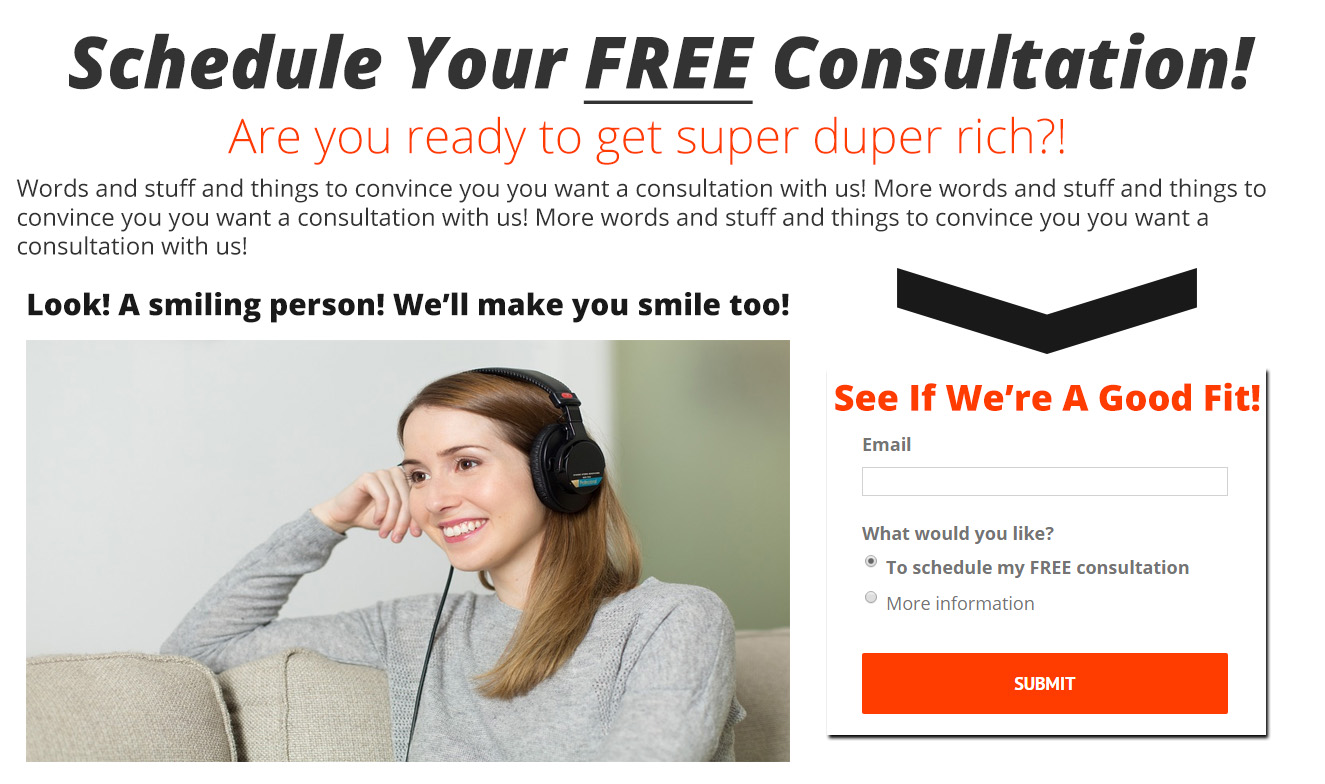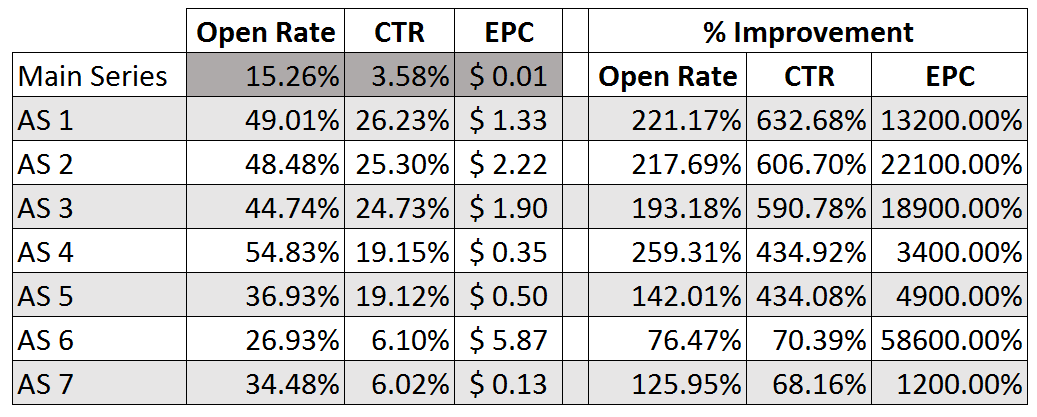WTF #2: The “Main Series” Segmentation Strategy
The Main Series is the backbone of your Interest Driven Sales Funnel.
(please read WTF #1 if you haven't already)

It’s responsible for building and maintaining the relationship with your audience while simultaneously gauging interest.
Again, the engagements in the Main Series don’t necessarily mean emails. Engagements are any form of communication with your audience. (retargeting ads, text messages, direct mail, phone calls, Facebook messages, etc.)
Please read that again. Engagements in the Main Series don't necessarily mean emails.
You’re simply sending content to see if anyone requests more information.
If someone requests more information (shows interest), they’ll enter into a designated Micro Sales Funnel that sells a related product or service, plus the corresponding up-sells, down-sells, and cross-sells.
Pauses, Skips, and Stops
While the Main Series diagram above follows a linear path, it may not be exactly one engagement after the other.
For example, if an individual is going through the Main Series and shows interest in a particular product, we may decide to pause the Main Series while they’re actively engaged in a Micro Sales Funnel.
In another example, if the individual enters a Micro Sales Funnel and purchases the product or service you’re trying to sell, it may make sense to skip down a few engagements to where you’re talking about a different product, service, or topic.
Remember, the ultimate goal of the Main Series is to gauge interest. If interest is shown in a particular product, service, or topic – we don’t need to get them to show interest in it again and again … they’ve already requested more information.
As such, we can pause, skip, and even stop the Main Series, if the audience member has done what we’ve wanted them to do.
How Many Main Series?
You may be wondering how many Main Series you need for your business.
99% of the time, for a small business, you only need one Main Series.
The only reason you’d ever want more than one Main Series is if you offer products and services to wildly different audiences and you have enough offerings to support multiple Main Series.
For example, let’s say you own a sports nutrition company that sells supplements and other related goods.
You have two wildly different audiences: bodybuilders and people trying to lose weight.
In this instance, you may want two Main Series because a bodybuilder won’t be interested in some crazy diet pill or need motivation to go to the gym. The overweight person won’t be interested in the newest bodybuilding supplements or routines.
In this case, by having two Main Series, you won’t waste time trying to gauge interest for something they’ll never be interested in.
Which Main Series?
Now, if you have more than one Main Series, you may be wondering when, and how, you should assign the individual to a particular one.
You should assign them at the very beginning by asking them.
For example, you can offer a 10% off coupon, have a question that asks, “What’s your goal: Build Muscle or Lose Weight?”, collect their contact information, and add them to the appropriate Main Series.
Another example, I’ve seen people buy lists of individuals who have previously purchased a diet pill. In this case, it would be fairly safe to assume they’re interested in weight loss and can be added to the weight loss Main Series.
Or, You Can Do This …
Creating, developing, and maintaining multiple Main Series is a lot of work.
Unless you have a large enough audience with enough different offerings, it’s unlikely viable to have more than one.
Instead, address both audiences in the same email.
For example, you can send an email with the first half talking about bodybuilder stuff and the second half talking about weight loss stuff.
Be sure to make the sections obvious so the subscriber can easily tell what pertains to them.
Now, you’re killing two birds with one stone!
What About Other Segmentation?
As you probably know, there are a million ways you can dissect your audience based on demographic information, occupation, interests, location, etc.
Continuing with the sports nutrition company example, males and females will likely have very different requirements, as will young vs old.
As such, it can be very beneficial to know this type of information; however, it’s not needed for the Main Series.
The Main Series is intended to be general enough to simply gauge interest in a product, service, or topic.
You don’t really need to connect on a deeper level at this point.
However, during a Micro Sales Funnel, knowing gender and age may be very beneficial. You can give examples of someone similar to your audience member finding success with a specific product or service.
Main Series Patterns
While you can theoretically “wing” the content and structure of your Main Series because each email (engagement) can stand on its own, it’s probably not the best strategy.
It’s generally best to follow a pattern or plan for a few reasons:
- It’s more logical for your subscribers and they’ll know what to expect
- It gives your subscribers more chances to show interest in a particular product, service, or topic. Not everyone will act on the first email (engagement) you send and by presenting your message several times, in several different ways, you give your subscribers more opportunities to act
- It’s easier for you to create content because you know what the content of your next email (engagement) should be
In this section I’ll give you several patterns to help you structure your Main Series.
Just remember, the main goal of the Main Series is to gauge interest! This way you are able to send more relevant information to your subscribers and sell more via your Micro Sales Funnels.
The 3 Es
Don’t be mad, I know I just made a few points on why you should follow a pattern, but this first “pattern” isn’t really a pattern at all.
Instead, it’s more a way to think about the emails you send.
Each email you send should have one of these Es as its primary goal:
- Entertain: These emails (engagements) are meant to entertain. Videos, pictures, stories, etc. provide great entertainment.
- Educate: Helpful emails that solve problems, answer questions, and provide guidance. How-to tutorials, white papers, case studies, etc. provide great educational material.
- Earn: These emails drive sales by bringing customers back to your business. Coupons, discounts, bonuses, etc. provide extra incentive to shop.
While each of these emails should have one clear goal or objective (Entertain, Educate, Earn), they don’t have to be mutually exclusive.
For example, if you send a how-to video, it should definitely be educational, but why not make it entertaining and offer a CTA to buy something at the end?
When To Use
You may want to use the 3 E emails if you offer TONS of products and services in an incredibly wide variety of categories.
Basically, you should follow this “pattern” when you offer so much “stuff” for a wide variety of interests and you have no idea what the subscriber may be interested in.
For example, if you run a massive ecommerce store (250+ products with 10+ unique product categories) and you have 10 top selling products you really want a new subscriber to see, you may not want to spend a full week promoting each one. It would take 10 weeks for them to see everything you offer.
Instead, you send a daily, 3 E email for 10 consecutive days. This way, the new subscriber will see what you offer much sooner and hopefully show interest in a product or two which will launch them into a Micro Sales Funnel.
How To Use
These emails are very versatile and can stand on their own (the subscriber doesn’t need to read the previous email or blog post to understand the email). Each email is its own entity.
If you’re sending this type of email, you want to send an email 3-7 times a week.
The frequency depends on a few factors. The first one being the longevity of the subscriber. For example, a newer subscriber may need more emails initially, especially if you’re trying to introduce them to your top 10 selling products.
You also want to take into account how long a typical subscriber stays on your list.
Is the average subscriber on your list for years? Months? Weeks?
How long do you want the average subscriber to be on your list?
Are you trying to “churn and burn” them where you’re sending an “Earn” email every day for weeks until they unsubscribe? In this case, you can send an email every day for those few weeks.
Or, are you trying to build and maintain a relationship for years to come? In this case, start the first week off with daily emails, but then ease back to maybe 3-4 emails a week. You also want a healthy mix of the 3 Es so you’re not just hitting them up for money every day.
The frequency of emails also depends on how you’ve set expectations. If, when they registered, you said you’d be sending daily emails, then they should receive daily emails. If you said you’d send emails a few times a week, do that.
Closing
Again, these 3 E emails aren’t so much a pattern as they are a way to think about what you’re sending.
Remember, while each email should have a main objective (entertain, educate, earn), it doesn’t mean one email can’t do all three!
Weekly “Pushes”
I call this pattern “Weekly Pushes” because every week you’re trying to sell (push) a different product or service to your list.
Instead of making random offers and sending random emails depending on your mood, you spend an entire week on the same topic.
This gives people more opportunity to see what you’re offering and act, while not being overbearing and “burning” them out.
The Weekly “Pushes” Framework
The goal of this framework is to get the person on the sales page. If the individual views the sales page, we know they’re interested in what we have to offer.
Step 1: Pick a widget to sell.
Step 2: Follow the pattern below for that single widget.
- Pattern: 3 and 2 (M, T, W, F, S)
Send 4 to 5 emails on the same topic, for the same widget, during each “push”. In general, it’s good to break up these emails to give people a little time to react, rather than bombarding them every day. For this reason, I recommend sending 3 daily emails, take a day off, send 2 more daily emails, take a day off, and then repeat with a new “push”.
- Email 1: Fun/personal story
- Relate to widget
- PS goes to sales page
People connect with stories. People enjoy stories. We want people to both connect with us and enjoy hearing from us, which is why we must share a story! Now, it doesn’t necessarily have to be a personal story; you can share a success story from a client or customer or even a well known individual, like a celebrity, just shared in a different light.
At the end of the story, close out (soft sell) with a simple PS line that takes them to the sales page where they can learn more, if they wish.
- Email 2: Promotion of widget
- Use a marketing formula: Problem-Agitate-Solve, Feature-Benefits-Advantages, Before-After-Bridge
- CTA goes directly to the sales page – “Click Here To Buy”
While stories are great and help us connect, sometimes a good old fashioned sales letter converts best … especially when they have the story from the previous email rolling around in their head! In this 2nd email, pitch your widget. You can use a marketing formula to help structure your message or do whatever you think is best.
The call-to-action should be straight forward and to the point with no mystery behind it, “If you’re interested in this widget, click here”. (How much more “interest gauging” can you get?! If the person clicks that link, we know they’re interested in our offer and they’ll enter one of our Micro Sales Funnels.)
- Emails 3-4: Content on topic of widget
- Link to a blog post that’s entertaining and/or educational
- Include CTAs in both the PS line of the email and within the article itself which link to your widget’s sales page
After sharing a story and a “hard” pitch, it’s time to ease back a little bit and just share some more information with them. Send links to articles, videos, and other resources they’ll find helpful, interesting, and entertaining on the same topic as the widget you’re trying to sell.
Include links to your widget’s sales page in your email PS line and throughout the particular article so they can easily navigate to the sales page, if they’re interested in learning more.
- Email 5: Content OR Promotion (discount)
Email 5 is optional. If the individual hasn’t visited your sales page after 4 emails on the same topic for the same widget … they may simply not be interested in that offer. So, use some discretion here. If you feel like this 5th email is “too much”, don’t use it.
If you do use Email 5, you can send another piece of content like emails 3 & 4 OR you can make a last-ditch effort to sell your widget by sending another “hard” sales email and/or by offering a bonus or discount.
That completes the Weekly “Pushes” framework! Rinse and repeat with a new product the following week!
Story-Based Series
Story-Based Series are similar to the Weekly “Pushes” in that you’re sending more than one email on the same product/service/topic. However, they’re different in that all of the emails you send are “connected”.
What do I mean by “connected”?
Think about a TV series like Game of Thrones, Orange is the New Black, The Walking Dead, The Sopranos, Breaking Bad … hopefully you’ve watched a TV series before.
The point is, what do all of these series have in common?
You need to watch all the episodes, in order, to truly enjoy it … but, once you’re “in”, you’re in and likely end up binge watching the whole series!
How do they suck you in and keep you watching?
Cliffhangers.
Or, as us marketers call them, opening and closing loops.
As you’re watching a TV series, they introduce five different story lines in one episode, but they don’t finish any of them in that episode. Instead, they make you wait until the next episode to see what happens; then, they close two of the previously established story lines … and start four more!
It’s never ending. As soon as one story line ends, two more start – keeping you hooked.
The idea of opening and closing loops is the core concept behind a Story-Based Series.
How To Use It
As I previously stated, send several emails on the same product/service/topic – anywhere from 2 to 10, depending on what you have to share.
As people get sucked into your story and start clicking on links and visiting pages, their actions trigger different Micro Sales Funnels.
Here are a few simple phrases that can be used to open loops:
- More on that later
- You’ll find out tomorrow
- In the next email you’ll receive X, so be on the lookout for it!
Finally, my last remaining tip is to write all these emails at once. Pick your story, map it out, where are you going to take people, what do you want them to click, how are you going to carry the story across several days. Then, write all 2-10 emails in one go.
These emails can be a rough draft at first, you simply want to make sure you’re opening and closing loops in a way that sucks people in.
If you break up when you write your emails, you’ll forget which loops you opened and closed and it won’t work.
Autoresponder Madness
A fellow by the name of Andre Chaperon is the grandfather of Story-Based Series (he calls them Soap Opera Sequences).
He put together a course called Autoresponder Madness that teaches how to write these Story-Based Series.
It’s a solid course and I highly recommend it, if this concept sounds interesting to you!
The course sales page: http://autorespondermadness.com
“Long” Course
The “Long” Course is the pattern I’ve been using with Crazy Eye Marketing for about a year.
Think of it as if you’re teaching your subscriber something long and complex. Consider every email (engagement) you send a lesson.
In my case, I teach the sales funnel concept by taking people through the sections they need to focus on, based on their order of importance and significance.
Of course, along the way, I dribble in different products and services I offer that make sales funnel development easier for my subscribers.
When To Use It
The “Long” Course model won’t fit every type of business; however, it works very well for businesses that offer courses/training/coaching and other services. You teach through this series and it makes a natural transition into selling a course, training, or coaching.
You also want to be able to provide a “linear” path for success – there’s a Point A and a Point B with clear steps to successfully get from Point A to Point B.
Back to my sales funnel “Long” Course example, the path for all sales funnels is the same: customers, business, delivery, the “meat”, emails, traffic, etc.
It’s a logical path to get from Point A to Point B.
Another example, weight loss: mindset ==> diets (simple to complex) ==> exercising (walk, run, first 5k) ==> supplements, etc.
This is another linear path from Point A to Point B. Of course, many people who are trying to lose weight jump straight to supplements and diet pills; however, the right way is to follow the “Long” course described above.
Example
I think the best way to describe the “Long” Course pattern is by providing an example. Picture it like this:
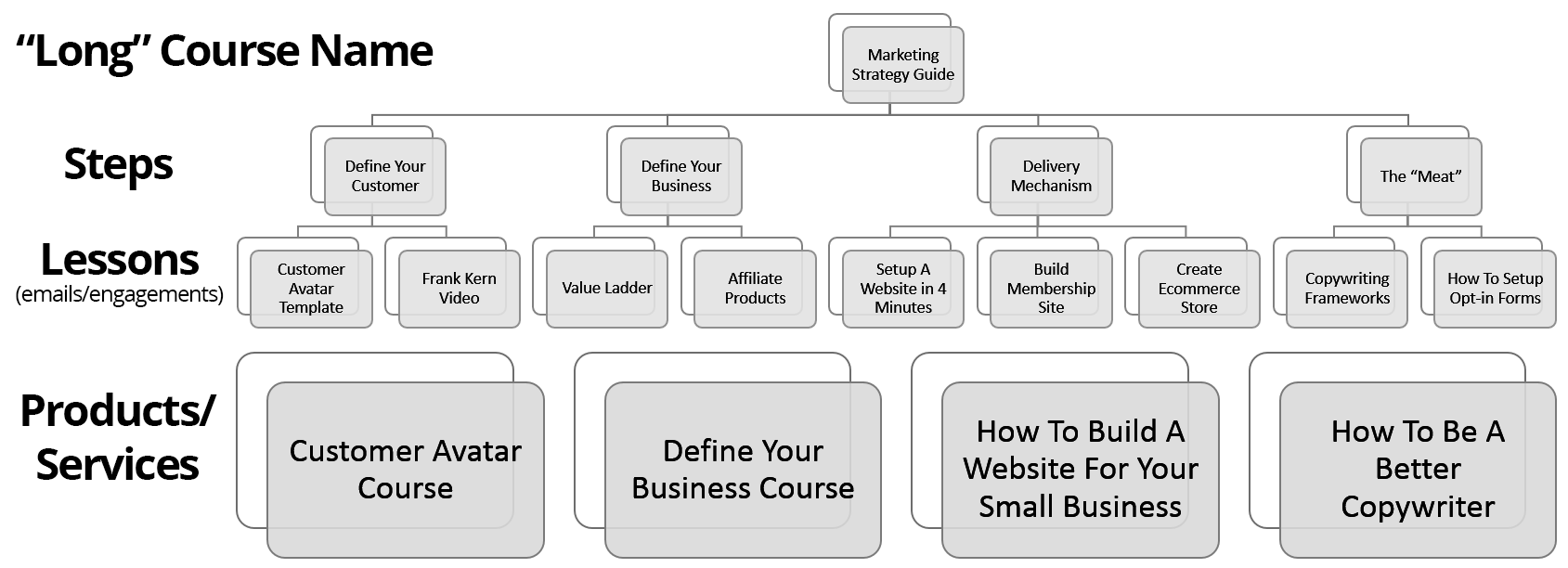
- “Long” Course Name: You should give it a name!
- Steps: How to get from Point A to Point B
- Lessons (emails/engagements): The particular blog posts, videos, podcasts, etc. you will send to your subscribers to teach them something about the particular step they’re on
- Products/Services: The corresponding products/service you offer as they relate to each step and/or lesson
As you can see, the “Long” Course is simply your content (blog posts, videos, white papers, reports, etc.) presented in an order that takes an individual from Point A to Point B.
Again, if you offer courses, training, coaching, or services – this pattern can be very effective!
Combining Patterns
I briefly want to address the fact the aforementioned Main Series patterns can certainly be combined.
For example, the majority of my Main Series for Crazy Eye Marketing is a long course. It works very well for what I offer and the market I serve. However, there are segments of it that are more 3 E styled and other segments that are Weekly “Pushes”.
Remember, the point of the Main Series is to gauge interest while building and maintaining a relationship.
You know your audience better than anyone else, if you think one pattern will work for one product and another pattern for another – mix it up! Or, better yet, split test to see which pattern performs better!
Continue Onward!
Click here to continue to WTF #3: Micro Sales Funnels That Make You Rich!

